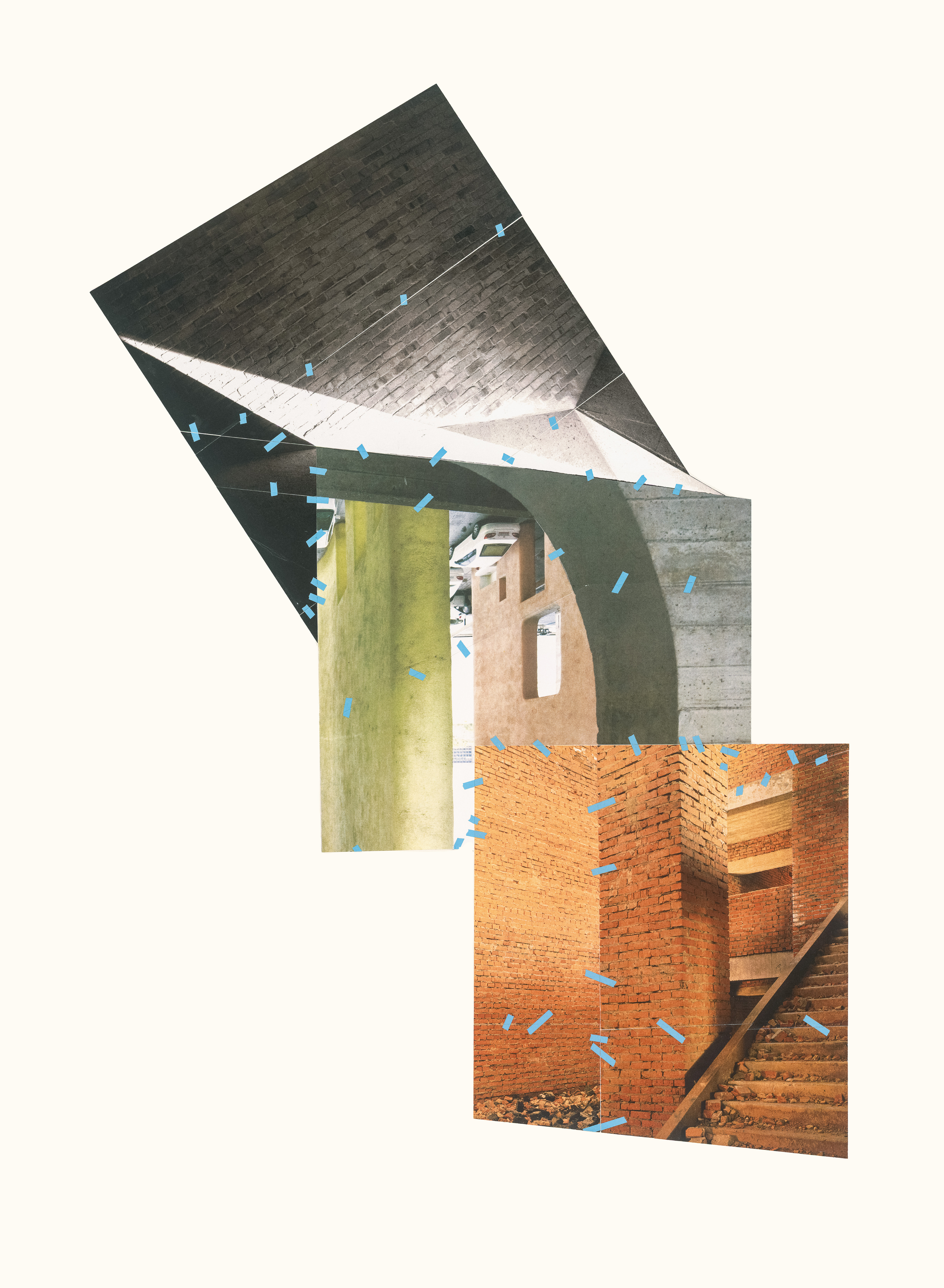The worlds portrayed here invoke an expanding range of scales from architectural to urban to landscape, while challenging our experience of gravity, orientation, and space-time. Borrowing their name from Giambattista Piranesi’s etching series, Carceri d’invenzione (c. 1749-1750), these collages mark a significant increase in scale and complexity, creating immersive visions reminiscent of the Italian master’s multi-layered imaginary pictures.[1]They also. The enlargement process requires seams to be used both within and between image fragments. Artist’s tape for temporary positioning is not removed but remains as part of the work. And the source material comes entirely from a select group of photographers working on architecture, urbanism, and landscape at the beginning of the 21st century.
[1]Giovanni Batista Piranesi (Italian, 1720-1778) apprenticed as an architect and became famous for his etchings and books depicting views of Rome, as well as his famous map of Rome created together with Giambattista Nolli (1743). The first fourteen Carceri d’invenzionewere created between 1749 and 1750 before reissue in 1761 as a series of sixteen.







